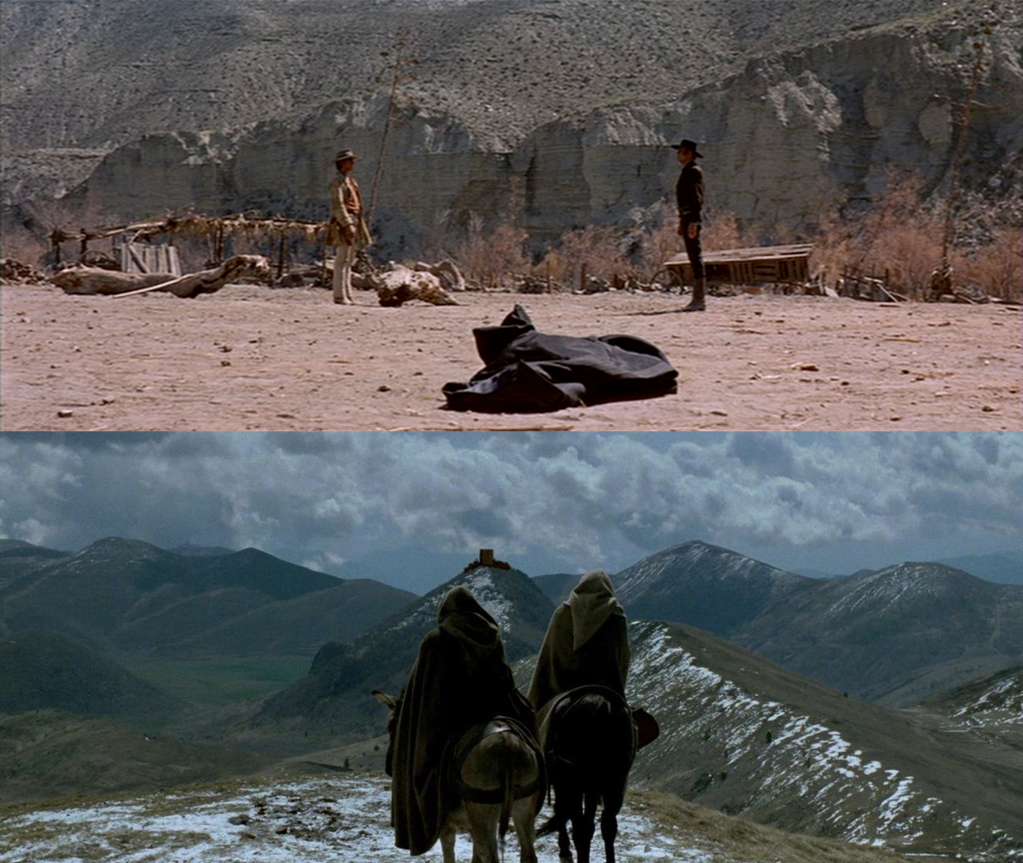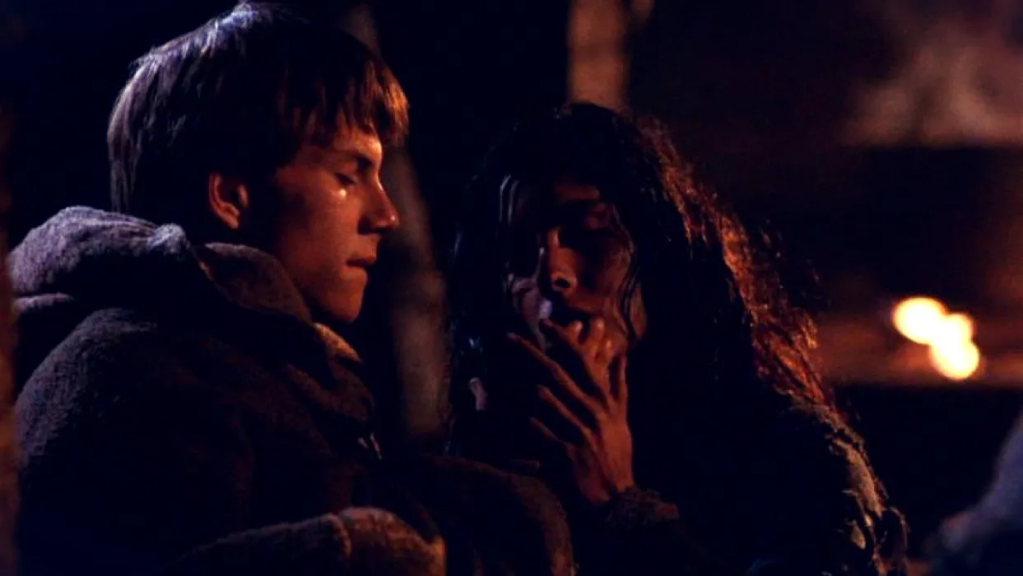Welcome to Six Damn Fine Degrees. These instalments will be inspired by the idea of six degrees of separation in the loosest sense. The only rule: it connects – in some way – to the previous instalment. So come join us on our weekly foray into interconnectedness!

Matt’s charming piece on his first encounter with Indiana Jones’ first adventure and his parents’ media pioneering brought back my own childhood memories of how I first discovered movies on videotape – and particularly which two films I watched over and over for family reasons.
To say the least, my parents had a very odd (not to say dark) media pedagogy when it came to deciding what films we would be allowed to see: by age 12, they had taken us to see the likes of Robin Hood – Prince of Thieves, Bram Stoker’s Dracula and Conquest of Paradise at cinemas, all of which were certainly not age-appropriate and featured memorably violent fights, vampire fellatio and witch strangulations (I assume there was a theme when my mom took me to watch the bleak Anna Göldin – Last Witch of Europe shortly after). Even worse were their choices for films on television, and I particularly remember the trauma of seeing Visconti’s The Damned (after whose ‘Night of Long Knives’ I couldn’t sleep all night) and the incessant sex scenes of The Other Side of Midnight. In short, terrible choices of parental guidance.
Even more oddly, however, they insisted that under no circumstances should we ever watch the adaptation of Umberto Eco’s The Name of the Rose, and they scared us with the revolting horror and violence we would encounter if we watched it nevertheless. Children wouldn’t be children if this hadn’t stoked our interest even more, and my sister and I craved the opportunity of getting our hands on that particular movie.
Contrary to Matt’s family, our parents weren’t tech pioneers – but my grandfather was! Coincidentally, by the late 1980s, he also bought a Commodore 64 as his first computer and let us have it when he got into further DOS programming. He was also the first person in our family to not just own a video recorder but indeed a JVC ‘double-decker’, on which you could both tape and copy programmes from one tape to the other. Consequently, his collection was growing, and among the many tapes, there was an excellent collection of documentaries on the Second World War – but only exactly two feature films as original VHS releases. Those would become the two movies my sister and I would watch incessantly whenever we slept over at my grandparents’ house in Thun, which was regularly!

I consider myself lucky that they are excellent films that I still count both among my favourites. The first one started with a brilliantly lengthy scene of gangsters and cowboys congregating around a Western train station. There was noticeably no music but instead the incessant screech of a windmill. At the end of all this, a man with a harmonica would show up and break the tension with music and gunshots. Sergio Leone’s Once Upon a Time in the West (1968) wasn’t only the first film score I ever consciously listened to, it was also a good lesson in all the basics I needed to have about great filmmaking. I particularly remember the emotional impact of Jill (Claudia Cardinale) coming across her dead new family on the hopeful ranch of ‘Sweetwater’, the steely blue eyes of Henry Fonda’s untypically cruel villain Frank and the devastating revelation of Charles Bronson’s past by the end of the film. Only much later, when I got to enjoy this epic Western again on the big screen, did I realise that I had been exposed to only the Pan and Scan version and understand the power of seeing the final duel in glorious CinemaScope.
You might have guessed: the second original tape was indeed Jean-Jacques Annaud’s adaptation of The Name of the Rose (1986), the rather crime-thrillery take on Eco’s intricately medieval and often highly philosophical novel and the film that put Sean Connery back on the 1980s cinematic map. From the eerie prologue to Connery’s arrival at the murdering monastery, accompanied by his novice Adson (Christian Slater in an early role) and the increasingly gory monk killings, I was completely mesmerized by the film and couldn’t watch it often enough. Admittedly, that famous sexual encounter between Atzon and a gorgeous nameless village girl (Valentina Vargas) played a role in that too, not to mention the glimpse of Christian Slater’s…

But(t) not only that: Both films combined exposed me to atmospheric locations, great international casts and master filmmakers, contrasting scores and ingenious suspense. As an initiation to cinema as a whole, I could have done much worse, I believe, especially if I had left my parents at the steering wheel of my filmic explorations. In any case, I’m still incredibly grateful for their hilarious failure and my grandparents’ apparent lenience. They both shaped my cinematic tastebuds and left behind indelible aftertastes.
One thought on “Six Damn Fine Degrees #132: Cowboys, monks and (first) videotapes”